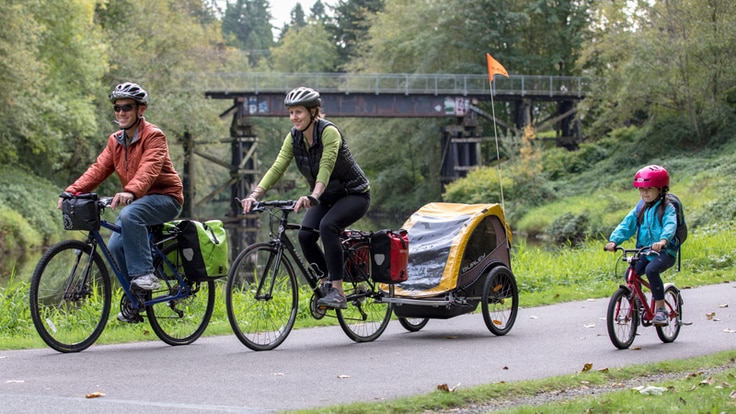If you're considering taking kids along on a bike tour, you've probably already done a tour or two and know the pleasure of traveling on two wheels. (If you're just getting started with bike touring, see our Introduction to Bike Touring article.) This means you know what it takes to get yourself ready for a multiday ride. But what about that little person who's in your life now? This article will help you figure out when your child is ready to join, what gear you need and how to have a successful tour with a child.
When to Start Bike Touring with Kids
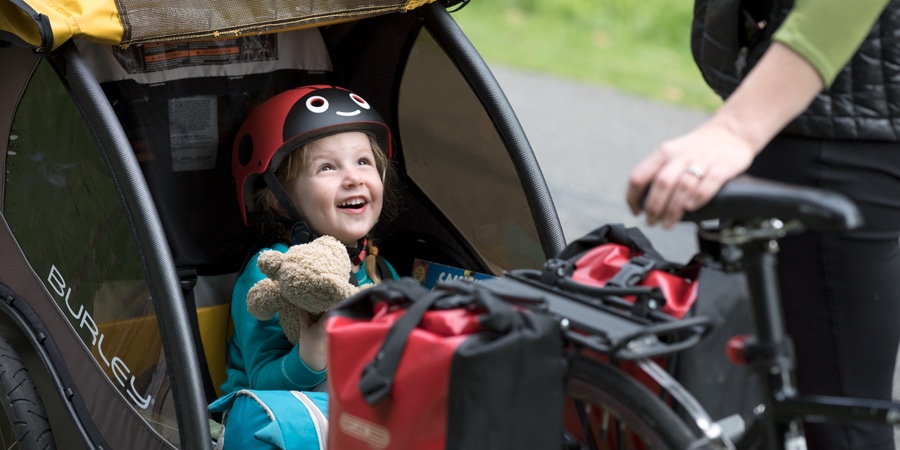
There's no one right answer as to when you should first take a child bike touring. Some parents are gung ho to head out as soon as their toddler is old enough to wear a helmet and ride in a trailer (this is usually around 12 months old—read more in our article about cycling with young kids—but you should talk to your pediatrician about taking your young child along on a bike ride). Others would rather wait until their kids can confidently pedal their own bikes (roughly around 7 or 8 years old). Either is doable, but there are differences:
- When taking toddlers and young kids who aren't yet riding their own bikes, you must consider the specific needs of young children, particularly around things like going to the bathroom, sleeping in a tent and eating. Also, you need to be up to the task of towing not only the weight of the child but also all their clothing and gear.
- When taking kids who are riding their own bikes, some aspects of the trip may be simpler since you don't have to cater to the needs of a toddler or young child. And, things will start to feel more like a typical bike tour, with every rider on their own bike (though you will likely still be carrying most of your child's clothing and gear). But, you will have to honestly think about how far your child can pedal their own bike—in some cases, you may end up planning shorter rides than you would with a child that's hitching a ride in a trailer.
Equipment for Bike Touring with Kids
How old your child is, how much they weigh and how comfortable they are with riding their own bike are three factors that go into determining the best mode of transportation for your little one on a bike tour. Here are some of your options:
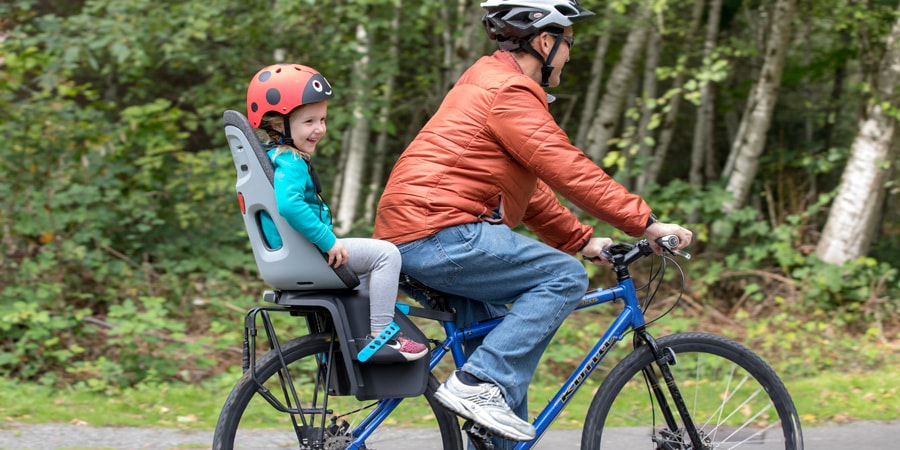
Child bike seats: Most child bike seats attach to the back of your bike and are able to carry children weighing up to about 45 pounds (check the product specifications for precise weight limits). Child bike seats are primarily used for day trips, but if you're determined to tour with a young child, then consider them as an option.
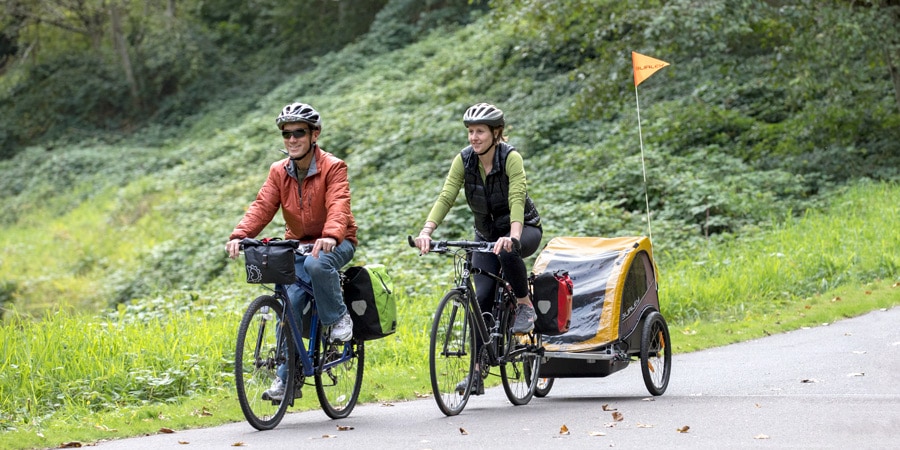
Child bike trailers: Bike trailers attach to the rear hub of your bike and allow your child to sit back and relax while you pull them along. They are typically a good option for toddlers and kids up to about 6 years old. Most trailers provide some storage space for packing gear, but be careful not to overload them. Some kids will get bored with being pulled along in a trailer so be sure to give them something to do in there—toys, stuffed animals and snacks are usually popular.
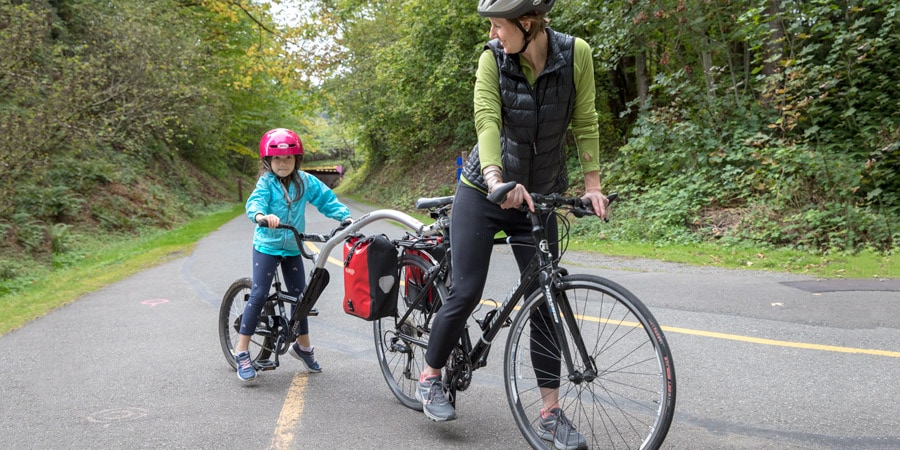
Trailer bikes: Trailer bikes give your child the option to pedal along and really feel like they are a part of the ride or sit back and relax if they get tired. A trailer bike is a good option for kids about 4 to 7 years old who show an interest in pedaling along with you.
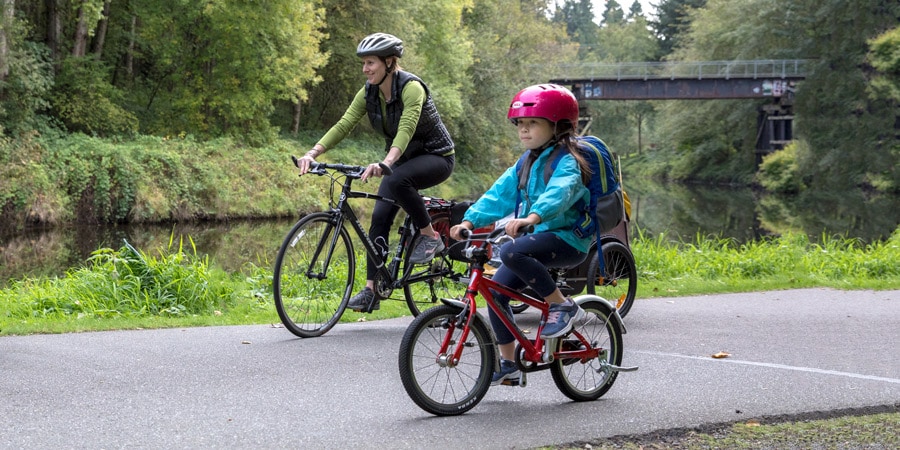
Kids' bikes: Once your child is capable of confidently riding their own bike and can't get enough of it, you can set them free and let out a sigh of relief as you no longer have to haul their weight around. The age of a child capable of touring with their own two legs varies, but around 7 or 8 years old is a good time to give it a try. Most kids' bikes are suitable for short tours, including those with a coaster brake and only a single speed, so you generally won't have to buy a new bike for your child to give touring a try. Check out our selection of boy's bikes and girl's bikes to get them rolling.
You can learn more about these options and get tips on bike riding with kids in our articles Cycling with Young Kids and How to Bike Ride as a Family.
Tips for a Successful Bike Tour with Kids
Make the trip about what motivates your kids: Instead of selling the trip to your young ones by talking about how far you're going to ride, make it all about the things you're going to do along the way or once you reach your destination. Most kids aren't motivated by the number of miles they can bike in a day like adults often are, but instead are interested in playgrounds, swimming holes, wildlife and ice cream shops. Whatever it is that excites your child, build the trip around that—the bike riding is just the means for getting to the fun.
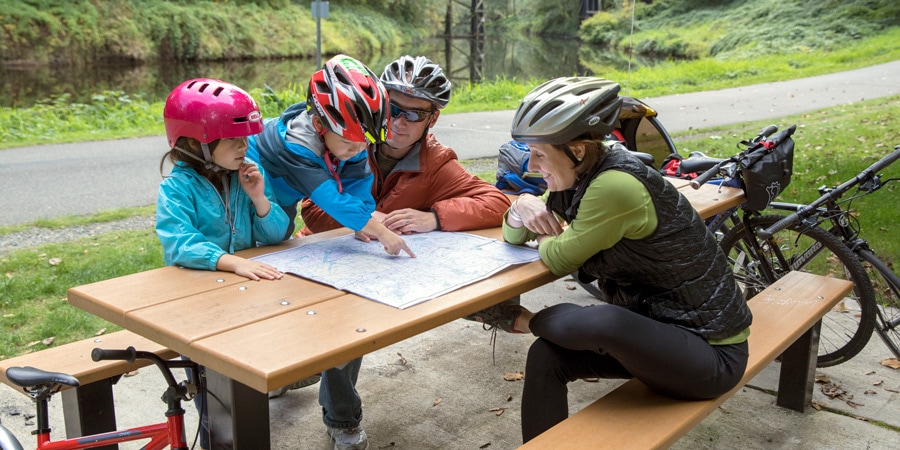
Involve your kids in the planning: Look at maps together to figure out all the fun places you can stop along the way and work together on a list of gear you'll need. For many kids, the more involved they are in the planning, the more invested they will be in the actual ride.
Choose car-free routes: If you're taking young children along who are either riding their own bikes or being towed in a trailer bike, bike trailer or bike seat, it's best to stick to routes with zero car traffic. Rail trails, paved bike paths and quiet country roads are all good options. To find car-free routes, check out the Rails to Trails Conservancy trail finder. If you must ride on roads with cars, choose ones that have wide shoulders and very little car traffic—taking a young child onto busy roads can be scary and stressful for everyone. At some point, kids will progress to the point where they can ride in traffic, but there's no set age for that. A good general recommendation is to wait until they're in their early teens and they know the rules of the road. Learn more about riding in traffic.
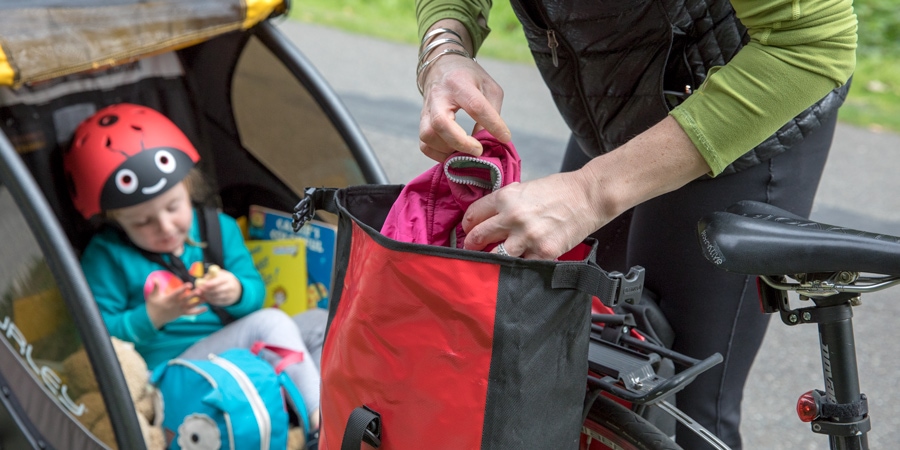
Carry your kid's clothing and gear: Unless you're riding with a teenager who's strong enough to carry weight on their bike, you should plan on packing nearly all your child's clothing and gear in your bags. That said, your child may take pride in having a couple items of their own on their bike, like a water bottle and a little bag with a snack in it. Read our article How to Pack for Bike Touring to learn more packing tips.
Start short and easy, then slowly add miles: When you are ready to spend the night away from home, don't pick a location that's too far away or requires riding lots of hills. Instead, plan to pedal just a few easy miles. Based on learnings from the first outing, you can probably add a few more miles to your next trip without your child even noticing. With every ride you go on, you'll figure out what your child is capable of and how many miles work for both of you. If the idea of riding with all your camping gear and extra clothing sounds tough, have a spouse or friend drive those things ahead to the campground so you don't have to carry it.
Ramp up the miles with teenagers: When your child hits their teenage years, you can typically start significantly increasing the miles you ride each day. Their bodies are now building muscle mass and able to endure longer, more strenuous activities. Don't be afraid to work up to 20, 30 or 40 miles a day. And, don't be surprised if your teenager eventually outrides you.
Set small goals and offer rewards: If your child is struggling to keep pedaling, set small goals and offer fun rewards. For example, tell them that when you reach the next telephone pole, you'll stop for a snack break. Or, when you pass the next stream you'll get off your bikes and splash in the water.
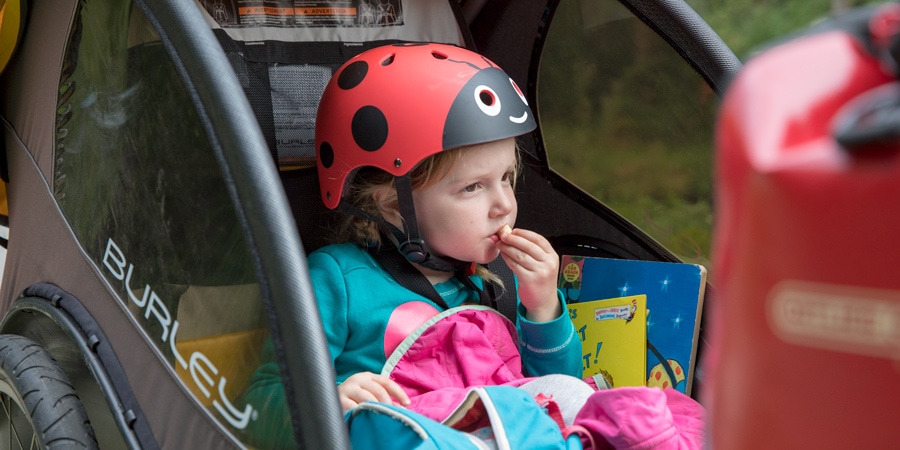
Bring plenty of snacks: Food can work wonders to lift spirits and provide a boost of energy, especially when you have a grumpy, tired child who doesn't want to go any farther. Bring foods you know you and your child like. A long bike ride is not the time to experiment with new foods.
Play games to pass the time: Just like how you play car games to entertain your kids on a long drive, you can play games during your ride. Counting games, identification games and trivia games are all good ideas. For example, encourage your child to count how many different types of birds they see or work together to identify the types of trees you pass by.
Try camping at home first: If you have a backyard big enough to fit a tent, build a campsite and then set out on a short bike ride near where you live. When you get back home, head to your tent and hang out just like you would if you were away at a campground. Try to avoid using the house for things other than the bathroom. This can be a good way to test things out and gently introduce your child to what bike touring is like.
Stick to bedtime routines: Long summer days can make early bedtimes challenging, so you may need to be flexible on the timing, but the more you can stick to your routine, the more familiar the experience will be for your child. Read books, sing songs and do whatever else you typically do to help your child wind down.
Talk about what went well and what didn't: After the trip, spend time talking together about what went well and what didn't. If the experience was difficult or scary for you and/or your child, don't ignore that. Talk about the challenges and successes and how you handled them together—doing so will help you learn from the experience.
